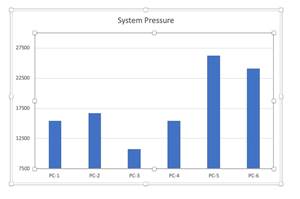New Way to Characterize Moldability Of Resins & Part/Tool Designs
Experienced injection molders have long known that a resin’s melt flow index (MFI), measured under very low-shear conditions, provides very little information about how it will process under many orders of magnitude higher shear in an actual mold.
Experienced injection molders have long known that a resin’s melt flow index (MFI), measured under very low-shear conditions, provides very little information about how it will process under many orders of magnitude higher shear in an actual mold. They know, for example, that two materials of the same MFI can process quite differently, and a material of a lower MFI can sometimes process much easier than one with a higher MFI.
A better alternative is to use a capillary rheometer to produce curves of viscosity vs. shear rate, which clearly show changing viscosity caused by shear thinning. However, such curves provide mainly relative moldability comparisons; the units of measurement (Pascal-seconds for viscosity and reciprocal seconds for shear rate) are of no practical value in judging a resin’s process window.
A novel solution to this problem was presented at NPE2012 in Orlando, Fla., last month by Beaumont Technologies Inc., Erie, Pa. As explained by CEO Dr. John Beaumont, his new Therma-Flo “moldometer” not only characterizes the injection moldability of polymer melts in a practically useful form, but it goes beyond all existing rheometers by measuring flow under the thermal conditions the melt “sees” when flowing through a cooled mold. Beaumont’s moldometer uses an actual injection molding machine, which fills a “mold-like apparatus” that contains 15 different geometries—some that resemble a modified trapezoidal runner, ranging in diameter from 0.040 to 0.180 in.; and some that resemble a cavity geometry from 0.020 to 0.120 in. thick. The system is designed to index automatically through the various geometries, filling one at a time, and molding parts in each geometry over a range of 10 injection speeds. With five repetitions for each speed, that amounts to 750 molding trials for each material. The flow channels have direct melt sensors to measure pressure and velocity with a high-speed data-collection system.
The accompanying graph shows a characteristic “moldometer flow sheet,” which is unlike anything produced by a typical rheometer. It shows the melt pressure in psi/in. required to flow a material through cavities of different thickness. The curves shown here for ABS display a typical drop in pressure required to go from very low speed to higher speed, as a result of shear thinning. More surprising is the fact that,
after the initial drop, the curves tend to level off, requiring little or no increase or decrease in pressure per inch of flow at higher and higher speeds. This would not be predicted from capillary rheometer curves, which show steadily declining viscosity at higher shear rates (related to flow speed). Beaumont believes that further research will establish a material’s “critical velocity” at which the moldometer’s psi/in. data can
be extrapolated to predict filling pressures in molds of any size. The “critical velocity” is the condition where the melt will not freeze off during filling because heat loss to the mold is exactly balanced by shear heating.
Beaumont sees many applications for his new material characterization method: comparing flowability of different materials or formulations; predicting ability to fill a mold within the pressure limitations of a given injection machine; and verifying the predictions of computer mold simulations.
Related Content
How to Achieve Simulation Success, Part 2: Material Characterization
Depending on whether or not your chosen material is in the simulation database — and sometimes even if it is — analysts will have some important choices to make and factors to be aware of. Learn them here.
Read MoreFront-End Mold Simulation Software Simplifies and Streamlines Design
SimForm by Maya HTT highlights its front-end mold simulation software as a solution for mold designers and tooling managers.
Read MoreSoftware Suite Creates Integrated Workflows for Optimizing Moldmaking
Eastec 2025: The HxGN Mould and Die Suite includes VISI, WORNC, NCSIMUL and datanomix tools to provide an integrated workflow from design/engineering to manufacturing and automation.
Read MoreRead Next
Making the Circular Economy a Reality
Driven by brand owner demands and new worldwide legislation, the entire supply chain is working toward the shift to circularity, with some evidence the circular economy has already begun.
Read MoreLead the Conversation, Change the Conversation
Coverage of single-use plastics can be both misleading and demoralizing. Here are 10 tips for changing the perception of the plastics industry at your company and in your community.
Read MoreSee Recyclers Close the Loop on Trade Show Production Scrap at NPE2024
A collaboration between show organizer PLASTICS, recycler CPR and size reduction experts WEIMA and Conair recovered and recycled all production scrap at NPE2024.
Read More











